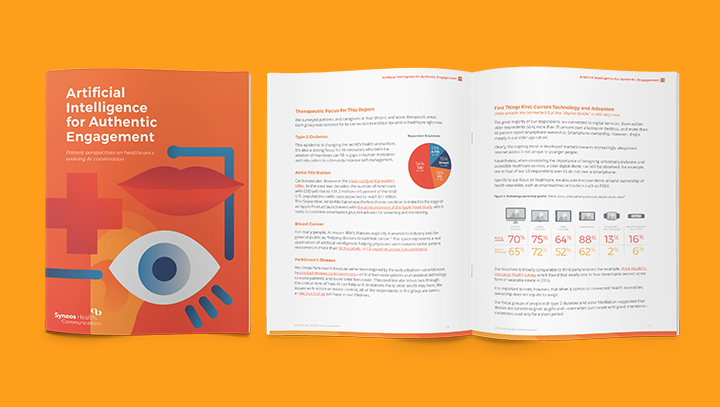To download this report in full, click "Download" on the right side of this page.
Short on time? Check out the Executive Summary below.
Executive Summary
Over 2017, artificial intelligence (AI) became a mainstream topic of conversation with industry, investors and the media discussing its possible impact on all areas of our personal and professional lives.
It’s not enough that algorithms upstage human champions in chess, the game of Go and even TV game shows. Today’s smart systems also plot our travel routes, manage our traffic systems, log our financial transactions, structure our searches, predict our purchases, monitor our moods, recognize our faces, listen to our voices and even track our dream states. Now, the same AI wave is poised to transform healthcare with examples ranging from supercomputers identifying hard-to-diagnose cancers; robots assisting surgeons with complex procedures; and chatbot therapists supporting patients with cognitive behavioural therapy. Increasingly, it seems as if artificial intelligence will offer new doors into the healthcare system and suggest new pathways for both patients and physicians to follow.
While it can admittedly be difficult to separate the hype from the hope around artificial intelligence, the fact is that AI budgets at companies large and small are flush with cash, and still more venture capital will flow into healthcare over 2018 as investors build on the innovations that artificial intelligence technologies and approaches have already delivered.
Need help enrolling in a clinical trial? San Francisco start-up Mendel.ai has an app for that. How about some assistance juggling complex drug regimens for Type 2 diabetes? Dozens of services can help you, many of them even responding directly to your voice through platforms such as Amazon’s Alexa, which has now turned many millions more U.S. and European households into smart homes after dominating sales charts over the holiday season.
For all the hype and the headlines, what do we actually know about how people with chronic conditions will react when presented with the prospect of their health being managed by algorithms instead of doctors, or by smartphones and sensors rather than nurses?
To get answers, Syneos Health Communications™ surveyed approximately 800 European and American patients in three disease areas—atrial fibrillation, Type 2 diabetes, breast cancer—and approximately 200 caregivers for people with Parkinson’s disease.
In an online survey and in follow-up focus groups, we asked patients about their expectations and concerns around the potential role of AI in diagnosis, treatment and support in their day-to-day lives.
The findings present a unique window onto patients’ hopes and fears in an age of ever-increasing accelerations.
They highlight, for example, that a majority of people are anxious about technology encroaching on physicians’ authority and discretion. They’re comfortable with consumer technology in their daily lives, but don’t want tech (or tech companies) to whittle away their access to doctors or compromise their personal information.
Systems that support diagnosis and treatment are all well and good, patients say, but only if they play a supporting, assistive role to the human doctors remaining in control.
But while no one seems to want their doctor replaced, our findings nevertheless show a strong opportunity for using new technologies and capabilities to support patients by scaling and supplementing “nurse” interactions in the gaps between real-world visits and appointments.
Equally important to patients, however, is who the voice and content of new services is seen to come from.
Our findings highlight that patients do not want to see their doctors replaced, but take on an additional role in healthcare’s future, including oversight of any tools and services developed and, critically, of how they’re delivered.
Artificial intelligence may be the province of the world’s biggest tech companies, but it seems that without the endorsement, recommendation, comfort and control of physicians, AI tools designed to drive patient engagement won’t gain traction in the real world with those who need care and support the most.
Most people who work in healthcare understand that improving patients’ lives is a privilege and, for many, even a calling. As AI-powered devices and services play a larger role in care delivery, all our industry’s stakeholders— from drug manufacturers through payers and physicians to advocacy groups—have an opportunity to pursue that calling still further by developing partnerships to step outside their traditional roles
This concept of “virtual nurse assistants” is one not only well received by patients, but one which is seen to offer both personal benefits through 24x7 access to support and benefits for society as a whole by freeing up face-to-face time for those who need it the most.
In terms of how AI can help deliver these benefits, one capability stands out in our findings—the potential for voice recognition and conversational interactions to provide a new interface for digital patient support services.
For those who follow financial news, it’s already been obvious throughout 2017 what healthcare AI can do for innovators and investors. Our findings set the stage in 2018 and beyond for healthcare and life science leaders to join the conversation and to demonstrate what AI can do for patients and society.

